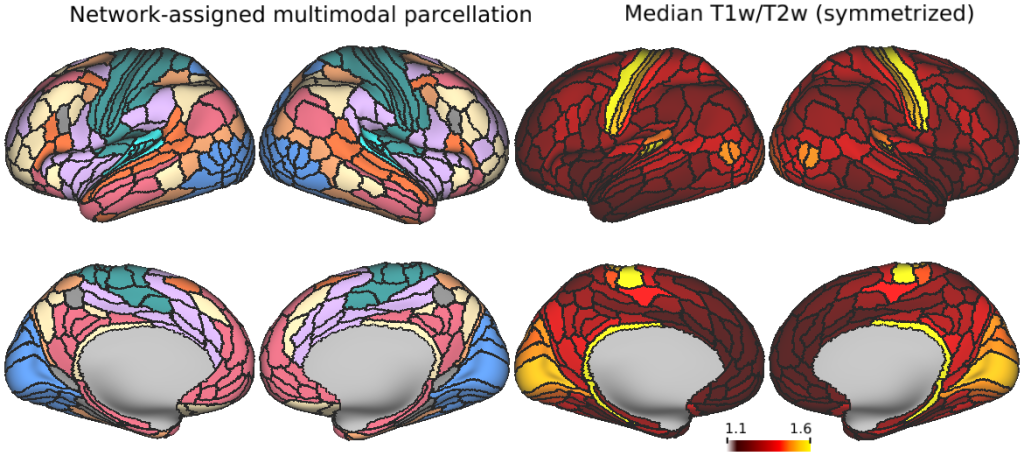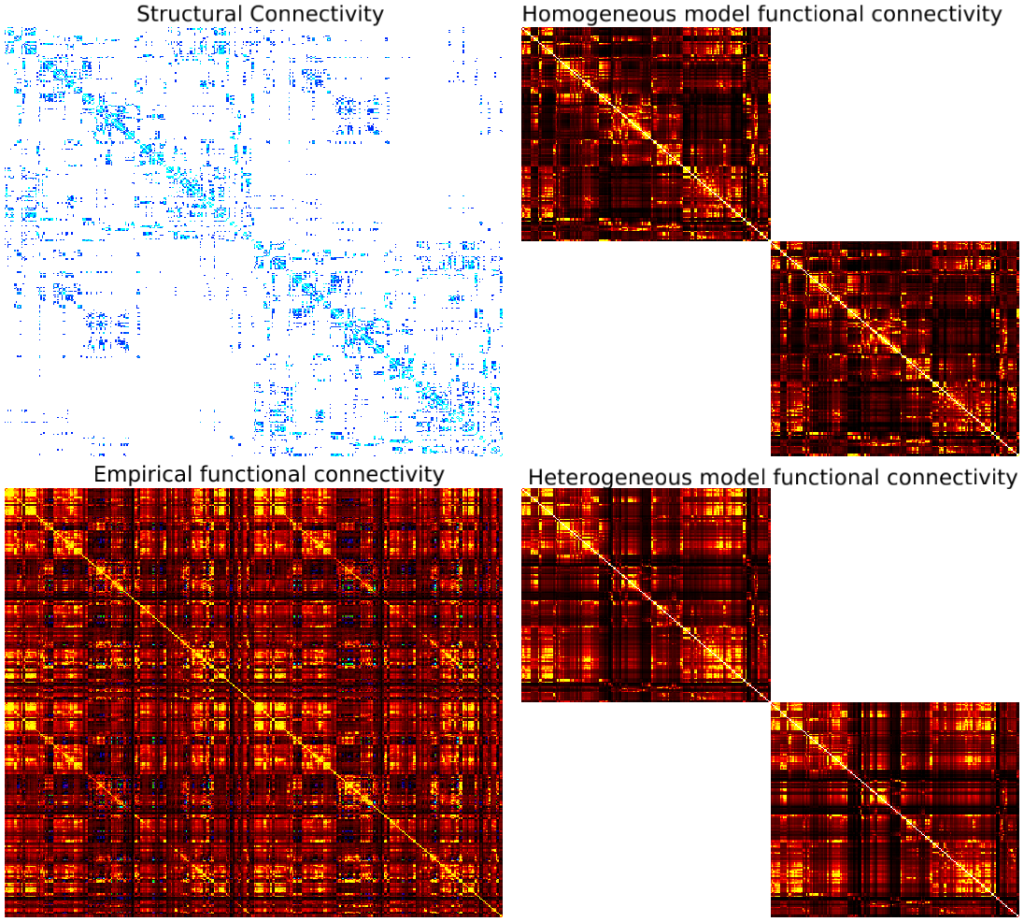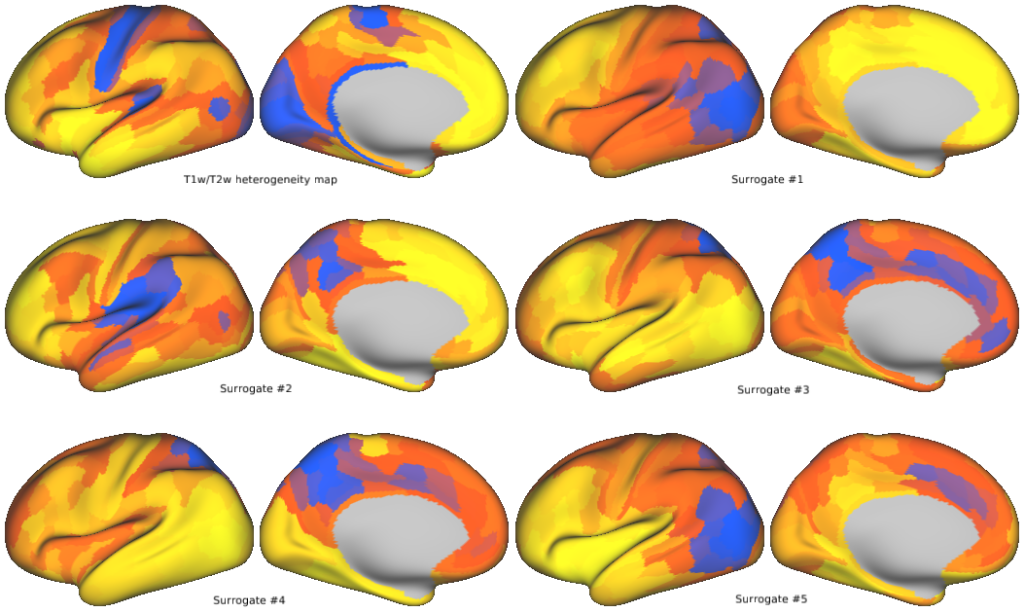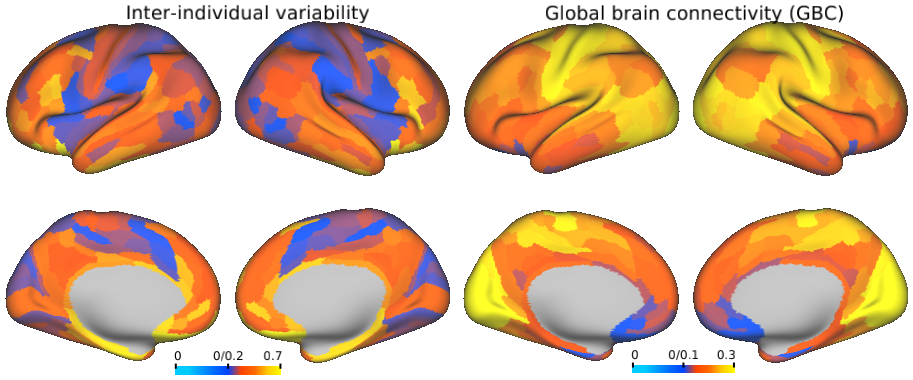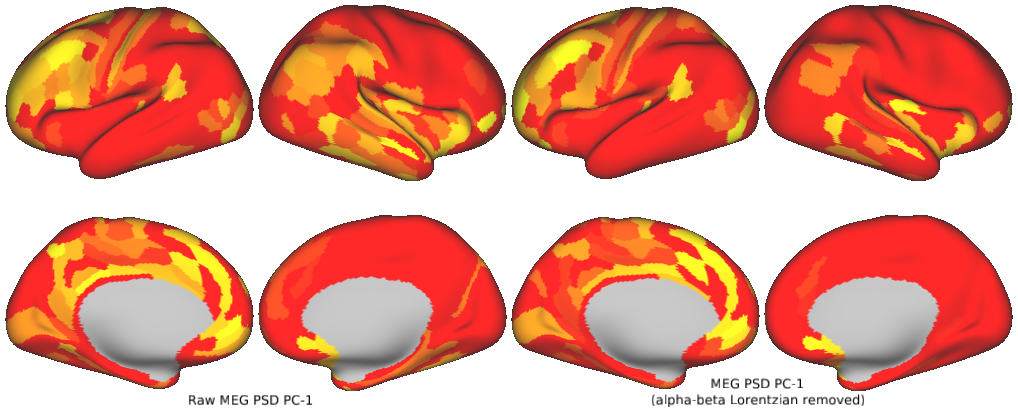FULL TITLE:
Hierarchical heterogeneity across human cortex shapes large-scale neural dynamics
SPECIES:
Human
DESCRIPTION:
This study involves the main measures and results derived in Demirtas et al., 2019 (Neuron). The organization of the scenes follow:
Scene: Networks and T1w/T2w
The median T1w/T2w map that is symmetrized (i.e. averaged across left and right homologous parcels) (Figure 1C) and network-assigned multimodal parcellation (MMP 1.0)(Figure 1D)
Scene: Structural and Functional Connectivity
Empirical group-averaged structural connectivity (Figure 2A)
Empirical group-averaged functional connectivity (Figure 2B)
Homogeneous model functional connectivity (Figure 2C)
Heterogeneous model functional connectivity (Figure 2D)
Scene: Heterogeneity maps
Hierarchical heterogeneity map (map linearized, inverted and normalized T1w/T2w map) and example surrogate maps (Figure 3A).
Scene: Inter individual variability and global brain connectivity
Empirical GBC (Figure 5B) - The spatial map comprising the average FC of each cortical area.
Inter-individual variability (dissimilarity) (Figure 6B) - The dissimilarity of FC patterns across subjects as proposed in Mueller et al., 2016 (Neuron).
Scene: MEG Power Spectral Density PC1
The first principal component (PC1) for MEG power spectral density (PSD) with/without alpha and beta Lorentzian (Figure 8D and Supplementary Figure 8). The data was generated using eyes-open resting-state MEG data of 89 subjects from HCP. Following preprocessing (see Demirtas et al., 2019 for details), the group-averaged PSDs were fit with sums of Lorentzian distributions. Then, alpha and beta Lorentzians were removed, and principal component analysis was performed.
ABSTRACT:
The large-scale organization of dynamical neural activity across cortex emerges through long-range interactions among local circuits. We hypothesized that large-scale dynamics are also shaped by the heterogeneity of intrinsic local properties across cortical areas. One key axis along which microcircuit properties are specialized relates to hierarchical levels of the cortical organization. We developed a large-scale dynamical circuit model of human cortex that incorporates heterogeneity of local synaptic strengths, following a hierarchical axis inferred from magnetic resonance imaging (MRI)-derived T1- to T2-weighted (T1w/T2w) mapping and fit the model using multimodal neuroimaging data. We found that incorporating hierarchical heterogeneity substantially improves the model fit to functional MRI (fMRI)- measured resting-state functional connectivity and captures sensory-association organization of multiple fMRI features. The model predicts hierarchically organized higher-frequency spectral power, which we tested with resting-state magnetoencephalography. These findings suggest circuit-level mechanisms linking spatiotemporal levels of analysis and highlight the importance of local properties and their hierarchical specialization on the large-scale organization of human cortical dynamics.
PUBLICATION:
Neuron
- DOI:
10.1016/j.neuron.2019.01.017
- Murat Demirtas
- Joshua B. Burt
- Markus Helmer
- Jie Lisa Ji
- Brendan D. Adkinson
- Matthew F. Glasser
- David C. Van Essen
- Stamatios N. Sotiropoulos
- Alan Anticevic
- John D. Murray
- University of Oxford
- Washington University in St. Louis
- Yale University
- Sir Peter Mansfield Imaging Centre, School of Medicine, University of Nottingham, Nottingham, UK
- St. Luke's Hospital

